When my husband, Ken, and I moved to Ecuador in 2019, we fully intended to make the most of the myriad cultural, historical, and scenic attractions that our adopted city of Cuenca had to offer. After all, those were high on the list of reasons we had chosen to live in this UNESCO World Heritage Site in the first place. But we soon fell into an inevitable and familiar weekly routine: walking the dog three times a day (she’s a lucky girl!); working out at the same places; studying/working remotely; grocery shopping at the same stores; eating at the same restaurants; socializing with the same group of friends—before we knew it, we’d almost forgotten about the many wonderful diversions that draw both travelers and expats to this part of Ecuador. But when we recently had a visit from some British friends, who were curious to see why we had ended up in Cuenca, we decided we needed to put on more of a show for them. And it was their visit that really reminded us of why we were so inspired to move to Cuenca.
Are you interested in retiring abroad? Yes | Not Sure Yet
The following is a suggested itinerary for how you could easily fill up three days in and around Cuenca, and is based on the activities we did with our friends.
Day 1

After a leisurely breakfast, either at your hotel (many accommodations include breakfast in the room price) or perhaps at Café Ñucallacta in the historic center (great coffee and pancakes!), head to the city’s central plaza—Parque Calderón—to admire the impressive Catedral de la Inmaculada Concepción, with its blue-and-white-tiled domes. This cathedral, inspired by St Peter’s Basilica in Rome, blends a mixture of Roman and Gothic architecture and is undoubtedly the crown jewel of Cuenca’s historic district. For a couple of dollars, you can climb up a seemingly endless, vertiginous stone staircase to the cathedral’s Santa Ana terrace to enjoy fantastic views of the city—a certain degree of fitness is required!
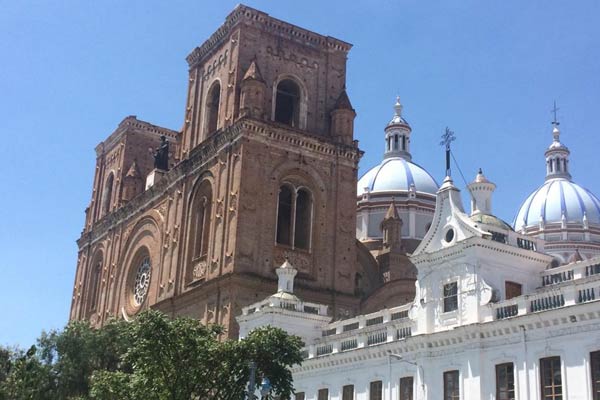
Soak up the laidback atmosphere of the shady plaza and perhaps enjoy some street artist entertainment—a common occurrence. Across from the cathedral, you can hop right onto the Cuenca tourist bus—a double-decker with an open top, that does two different loops around the city. Tickets are just $5 per person, and it’s a great way to gain an overall perspective of the city and its surroundings.

Get Your Free Ecuador Report Here:
Learn more about Ecuador and other countries in our daily postcard e-letter. Simply enter your email address below and we'll send you a FREE REPORT - Ecuador: Live Well on Your Social Security.
This special guide covers real estate, retirement and more in Ecuador and is yours free when you sign up for our postcards below.
Tours run pretty much every hour, the majority with a Spanish-speaking commentary, but a few also have one in English. There is a northern and southern loop, and having done both, our preference is the southern loop, since you get to spend time at the Turi overlook, which gives fantastic views of the whole city and you also receive a free shot of the local brew known as ‘canelazo’. Either loop takes about two hours and is a great introduction to Cuenca.

Back at Parque Calderón, you may fancy a bite to eat at any one of the hundreds of restaurants in the historic center. A favorite of ours is Le Bistro, serving great crêpes, baguettes and heartier traditional French dishes like boeuf bourguignon. It also has a great location, right next to the cathedral in a peaceful, traffic-free courtyard. With your batteries recharged, you could then embark on some retail therapy. Head to nearby Plaza San Francisco, passing the colorful Plaza de la Flores (flower market) on your way, where you can buy a dozen fresh roses for just a few dollars.
At Plaza San Francisco you’ll find dozens of vendors from the northern market town of Otavalo, selling their woven and leather goods. Great deals can be had on ponchos, blankets, tapestries, wallets, belts, and all other kinds of artisanal goods. A little bit of negotiation is expected, and you can usually get a few dollars knocked off the starting price for most items. At the western end of the plaza is the Centro Municipal Artesanal, a partially-covered complex, where some of the more skilled artisans have their workshops and sell their goods. Items such as beautifully hand-carved wooden chess sets and stained-glass artwork featuring local scenes can be found here.
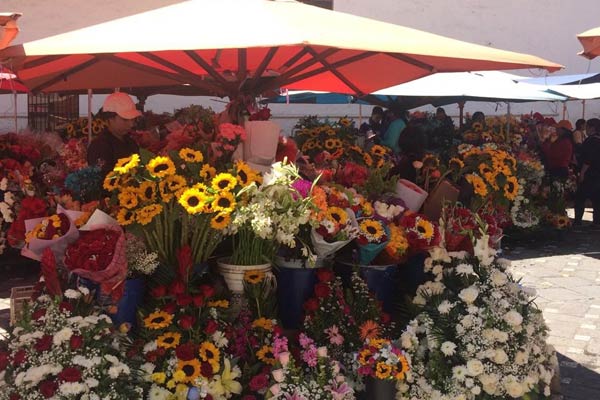
If you’re still not shopped out by this point, head a few more blocks down to Calle Larga and visit the Panama hat museum, where you’ll find some interesting information about the history of this stylish national accessory, and may be tempted to buy one for yourself.
If shopping is not your thing, bypass one of these previous activities and head to the excellent Museo Pumapungo, a little further east on Calle Larga. Entry is free and there are some wonderful exhibits both indoors and outdoors, covering Pre-Colombian history, archeology, and culture. Our favorite is the gruesome shrunken head exhibit, housed in a suitably low-lit, slightly creepy corner of the museum!
Finish off the day with dinner at one of the many excellent downtown restaurants—for a real treat, try El Mercado, one of Cuenca’s finest dining establishments, where you can enjoy creative takes on national dishes like seco de chivo (goat stew) and locro de papas (creamy potato soup), all prepared to Michelin-star quality.
Day 2
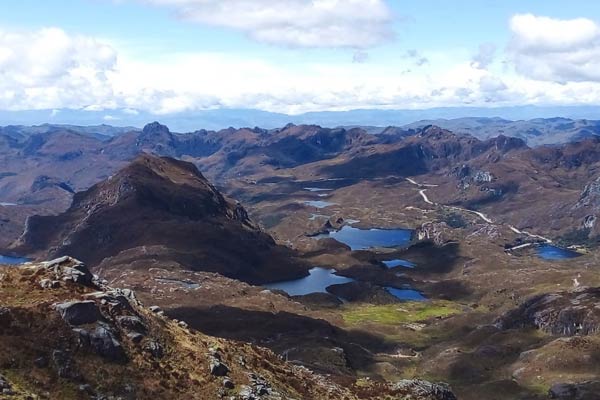
It’s time to get some fresh air into your lungs, so take any Guayaquil-bound bus from the central bus station (terminal terrestre) and head up to Cajas National Park, about 22 miles west of Cuenca. Alternatively, you could hire a driver to take you there, spend a couple of hours at the park, and then head back to Cuenca, for about $40 to $50. The park’s main entrance is at Laguna la Toreadora, along the main highway between Cuenca and Guayaquil, and there is a ranger station, visitor’s center, and café here.
This park is incredibly beautiful and was one of the main draws for us in choosing to move to Cuenca. It is classified as a high-altitude wetland, ranging from 10,300 to 14,600 feet above sea level, and boasts over 4,000 bodies of water, including many picturesque lakes. Stunning Andean páramo vistas and endless miles of trails make Cajas a mecca for outdoor enthusiasts. Activities such as hiking, rock climbing, trail running, and fly fishing are enjoyed year-round here.

Get Your Free Ecuador Report Here:
Learn more about Ecuador and other countries in our daily postcard e-letter. Simply enter your email address below and we'll send you a FREE REPORT - Ecuador: Live Well on Your Social Security.
This special guide covers real estate, retirement and more in Ecuador and is yours free when you sign up for our postcards below.
If you decide to hike on any of the well-marked trails, you’re required to first register your details at the ranger’s station. Many people just visit to admire the views and enjoy a hot chocolate in the panoramic café, but the hikes here are excellent (though strenuous due to the altitude!). If you’re reasonably fit, try Hike 1, which is a lovely loop and takes around three hours, passing several pretty lakes and an enchanting forest of intriguing ‘paper trees’ (árboles de papel), so named for their paper-thin bark. For any hiking in Cajas you should wear good quality boots, take plenty of food and water, and lots of warm and waterproof clothing since the weather is notorious for changing on a dime.
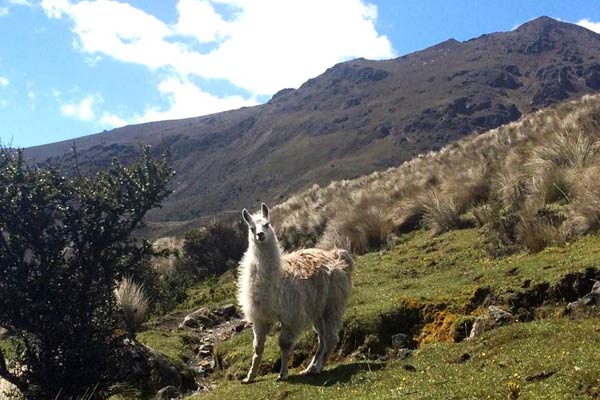
On the way back to town you may want to enjoy some fresh trout at one of the many restaurants lining the highway. Estancia San Juan is a popular choice, as is Hostería Dos Chorreras, and you can guarantee that your trout was probably swimming around just a few minutes before you ate it at both of these establishments.
Back in Cuenca, if you’re feeling a little fatigued after hiking—or just strolling around—at high altitude, take a taxi out to nearby Baños, where there are multiple thermal spring complexes. Two of our favorites are Hostería Durán and Novaqua Spa. Basic entry costs between $10 and $20, but there are more expensive packages, as well as many spa treatments on offer, too. It’s great to soak away any aches and pains in the hot mineral waters, which purportedly have many health benefits. These facilities also have onsite restaurants serving excellent food, and stay open until around 10 p.m.
Day 3

For this last day, we suggest visiting the Ingapirca Incan ruins, about a one-and-half hour’s drive from Cuenca. Ingapirca is arguably the most important (and definitely best preserved) Pre-Colombian archeological site in Ecuador, and while it may not be as visually stunning as Machu Picchu in Peru, it’s worth a visit. It’s situated in the province of Cañar at a high altitude (10,300 feet) and surrounded by beautiful, steep green hills. It covers around four hectares and served as an important Incan fortress, as well as a staging post for resupplying Incan troops on their way to the north of the country. It was also the scene of important ceremonial functions and much of the architecture reflects the Incans’ worship of the sun and moon.
There are various ways to visit this interesting archeological site. Many Cuenca-based tour agencies offer full day-trips starting at around $50 per person, which includes return transport from Cuenca, lunch, and a bilingual guide. If you have your own vehicle, as we do, then it’s a pretty straightforward drive north on the Pan-American highway, and there is plenty of secure parking at the site. It is also possible to get to the ruins by bus from Cuenca’s terminal terrestre, but this can be time-consuming (well over two hours). You could alternatively hire a private driver for around $10 to $12 per hour, though this can be costly if you want to take your time at the site.
The entrance fee is currently just $2 per person, and there are regular tours, some led by bilingual guides (it takes around one hour to tour the site). Be warned that it can be very chilly at this altitude and it’s a good idea to bring warm clothing. If you forget to do so, there are many enterprising ladies who have set up shop around the visitor center selling wooly hats, gloves, and ponchos!
Adjacent to the ruins is a lovely little hike that takes in some interesting natural rock formations— the most striking being the ‘Cara del Inca’ (face of the Incan)—a large cliff face that, with a little imagination, has some pretty convincing facial features in side profile. Back at the site’s entrance, there are several basic but clean restaurants and a small museum, explaining the history of the site and exhibiting some of the artifacts that were uncovered there. This trip really takes up the best part of a day, with the travel to and from Ingapirca eating up a good chunk of it.
A very pleasant option, if you want to make this trip a little longer and return to Cuenca the following morning, is to spend the night at the Posada Ingapirca, less than half a mile away from the site. It’s a lovely rustic, yet very comfortable, establishment in a tranquil setting with an onsite restaurant. A standard double room with great breakfast included costs a little over $50, or you can treat yourself to a romantic suite with a fireplace for just over $70! It’s the perfect place to enjoy some more peace and quiet before returning to the hustle and bustle of Cuenca the following day.
If this three-day itinerary has whetted your appetite for Cuenca, then consider staying for longer—there is so much more to see and we guarantee you won’t be disappointed. Cuenca’s near-perfect climate means that most activities can be enjoyed year-round, and who knows…you might even end up living here, like we did!

Get Your Free Ecuador Report Here:
Learn more about Ecuador and other countries in our daily postcard e-letter. Simply enter your email address below and we'll send you a FREE REPORT - Ecuador: Live Well on Your Social Security.
This special guide covers real estate, retirement and more in Ecuador and is yours free when you sign up for our postcards below.
Related Articles
Move to Ecuador for Its Wealth of Charms
An Overview of Traditions and Culture in Ecuador
Two Weeks in Ecuador: Touring Quito, Cuenca, and Salinas
Upcoming Conferences
The Only 2024 Fast Track Panama Conference
If your dream retirement involves stunning beaches… lush green mountains… a warm climate with no hurricanes… first-rate healthcare… incredible value for money (a couple can live well on $2,200 a month)… and the World’s #1 Retiree Discount Program…
Join our Panama experts and expats in February and discover why Panama could be your perfect paradise.
REGISTER NOW, SEATS LIMITED: EARLY BIRD DISCOUNT HERE

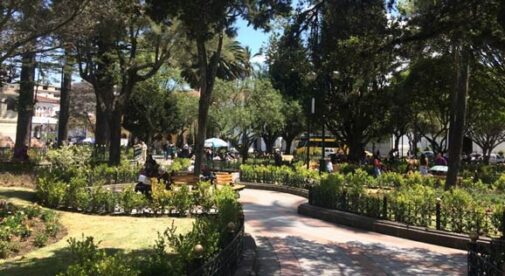
.png)